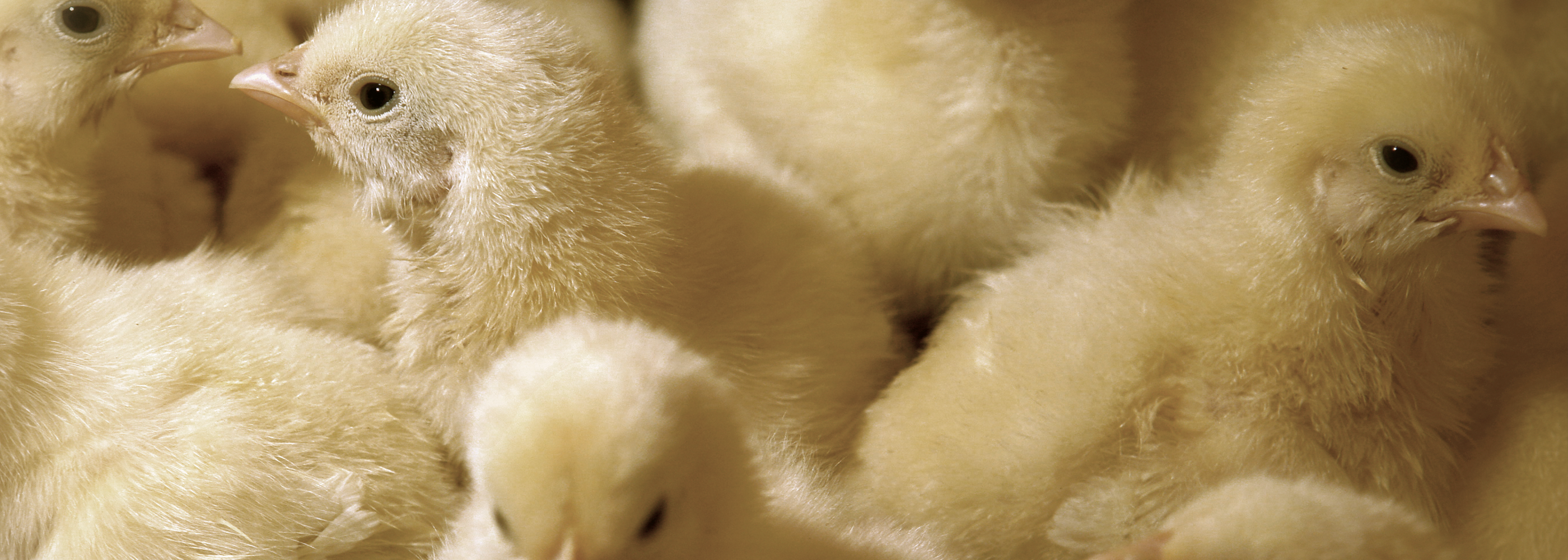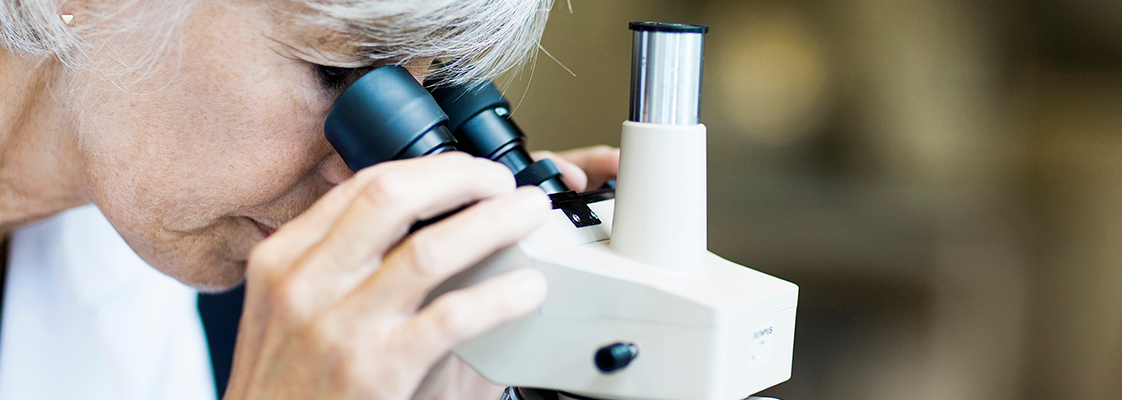A head start for healthy broiler chickens
Young chicks have very different digestive and nutritional requirements than older broilers. The highly digestible protein in HP AviStart helps chicks get the very best start in life, improving your return on investment.
Chicks grow and develop at a high rate during the first two weeks after hatching. Each chick doubles in weight several times as the heart, liver and digestive tract gain the necessary size to support developing muscles and bones.
Many nutrients are necessary to assure proper growth, but the ability to absorb nutrients is limited by the chick’s underdeveloped digestive tract. In this sense, young chicks are more sensitive to a shortage in protein than in lipids or carbohydrates. The residual yolk provides 30% of the nutrients required for growth and maintenance after hatch. However, the protein contribution from the yolk sac is exhausted much earlier than that of energy (Swennen et al., 2010).
To overcome the limitations of the immature digestive tract, a special feed is essential. When nutrient uptake is enhanced during the first days of life, particularly that of protein, overall performance may be improved right up to slaughter. Tests prove HP AviStart can make a significant difference.
How HP AviStart is superior to soybean meal
HP AviStart is a unique product that contains an extremely low level of the anti-nutritional factors (ANF), which are known to disrupt normal intestinal function (Woyengo et al., 2017). Therefore, HP AviStart minimizes the impairments of nutrient digestibility and absorption due to ANF. High digestibility ensures the chicks gain full benefit of the product’s high level of essential amino acids. See last page of the leaflet for a general comparison between HP AviStart and regular soybean meal.
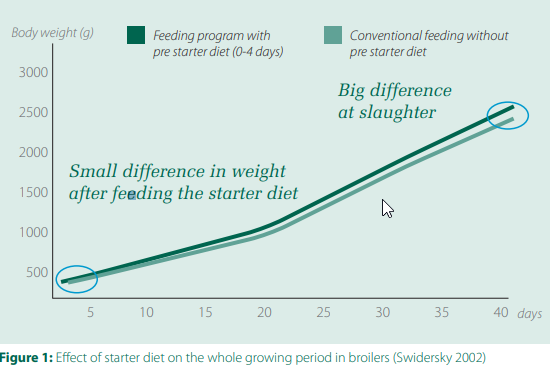
HP AviStart – key findings
End weight and feed conversion ratio are improved when 5-10% HP AviStart are included in broiler starter feed,
compared to the control diets.
The feeding trials in brief
- 20 trials including 44 assessments (HP AviStart-supplemented diets vs control diets)
- Conducted around the world
- Performed by external partners
HP AviStart was fed (5-10%) during the starter phase from day 0 to day 7-14. The trials ran for 35 to 42 days.
The feeding trials primarily compared HP AviStart with soybean meal or other protein sources such as fishmeal,
potato protein, corn gluten etc.
The trials were restricted to broilers fed isocaloric diets with similar amino acid content. They must have reported a
measure of variance.
The current meta-analysis includes body weight, feed intake and FCR.
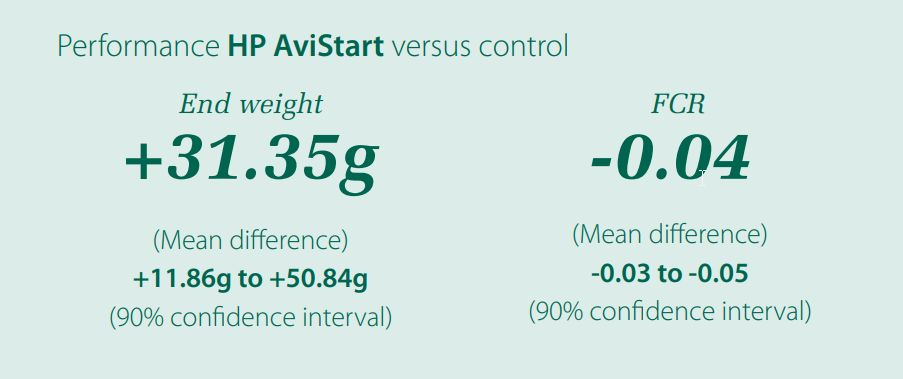
Correlation between digestibility and gut health and intestinal development in chickens
It has been demonstrated that variation in the amount of certain soybean meal antinutritional factors in feed, such as a trypsin
inhibitors, not only affects protein digestibility but also affects gut health (e.g. incidence of sub-clinical necrotic enteritis) in the
flock (Palliyeguru et al., 2011).
As the birds get older, the gut microbiota is more stable. However, in young chickens, the microbiota is not yet fully stable
(Shang et al., 2018). An influx of undigested nutrients from the small intestine may cause a proliferation of non-beneficial
bacteria (Apajalahti and Vienola, 2016). Ensuring the lowest possible trypsin-inhibitor activity in chicken diets is a valuable tool to improve the gut health and welfare of birds.
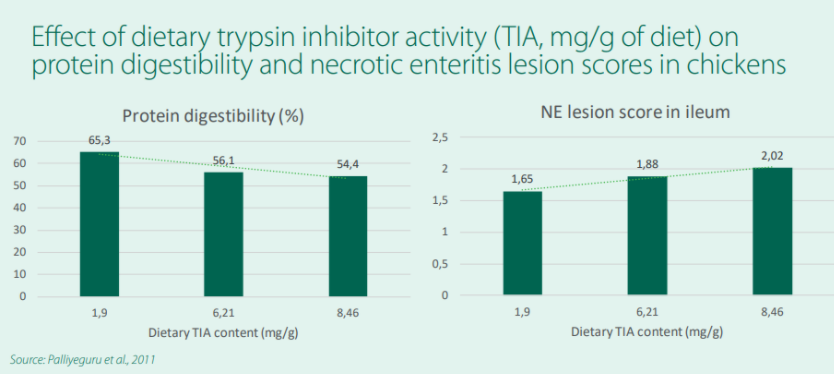
Effect of dietary trypsin inhibitor activity (TIA, mg/g of diet) on protein digestibility and necrotic enteritis lesion score in chickens
(32 days).
In broilers fed a 10-day corn or wheat-based starter diet with 5% HP AviStart, villi height:crypt depth ratio (VH:CD) was seen to
increase. A strong correlation (r² = 0.81) was observed between VH:CD and apparent ileal protein digestibility (Iji and Swick, 2014)
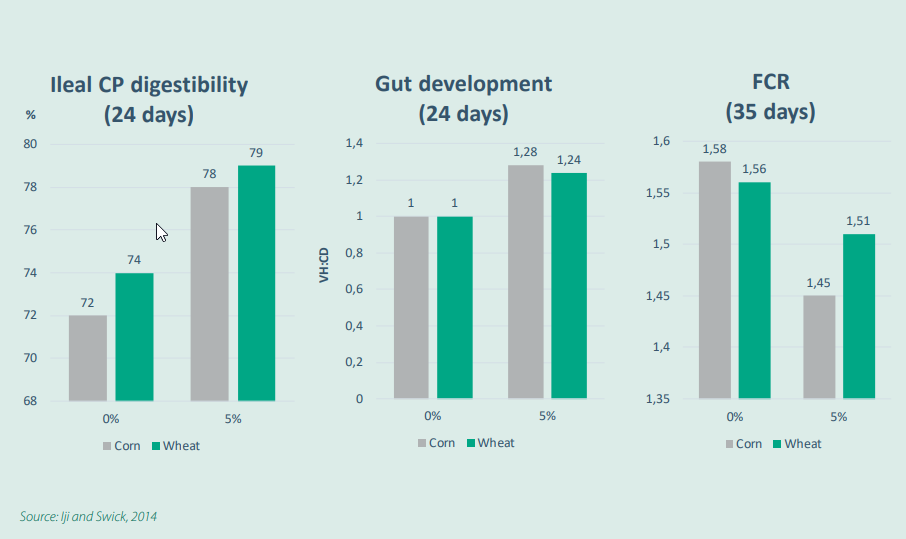
Another study showed a significant correlation (r² = 0.96, p = 0.009) between a well-developed gut and improved FCR
(Unpublished data, Nong Lam University, Vietnam, 2016). Compared to a control starter diet, VH:CD also benefited from a
carry-over effect when the starter diet contained HP AviStart (Thieu et al., 2017).
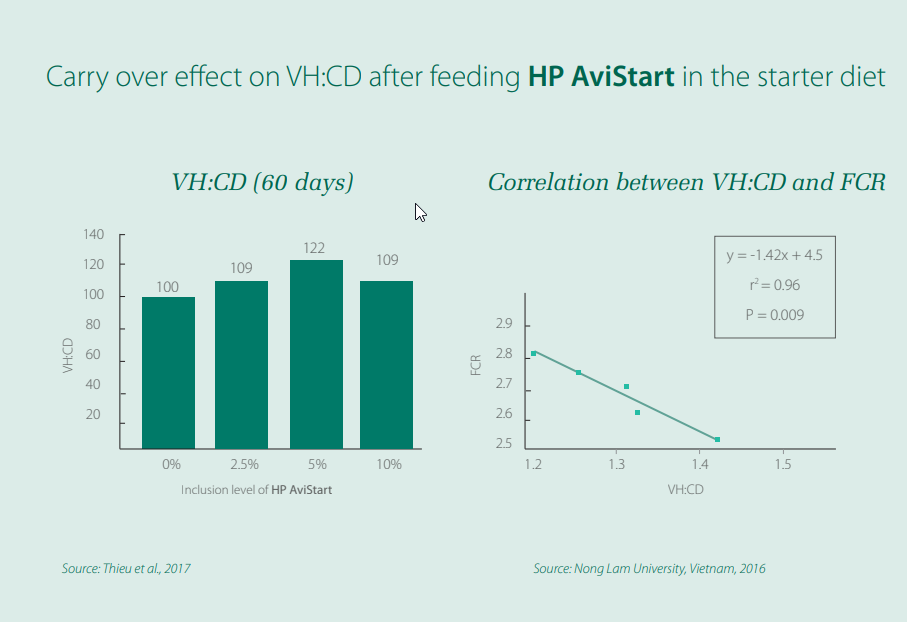
HP AviStart is a reliable protein source to improve gut health, reduce litter moisture and footpad dermatitis incidence
Better intestinal health and gut development in chickens will result in lower incidence of wet litter and, consequently, lower
incidence in pododermatitis, as observed in a study where HP AviStart replaced different protein sources in starter diets for
chickens (Bjedvov et al., 2015).

The improvement in intestinal health and development caused by HP AviStart and its low level of antinutritional factors in
chickens may lessen the initiation of intestinal mucosal inflammation, which helps the removal of antibiotic growth promoters
(AGP) that base their promoter effect in an anti-inflammatory action.
Thus, when comparing the inclusion of HP AviStart in starter diets with the addition of an AGP with anti-inflammatory
activity such as BMD, it has been observed that the inclusion of HP AviStart (no AGP during the whole rearing cycle) showed
performance results similar to those observed in birds fed the diets supplemented with AGP (Lupkins et al., 2017)
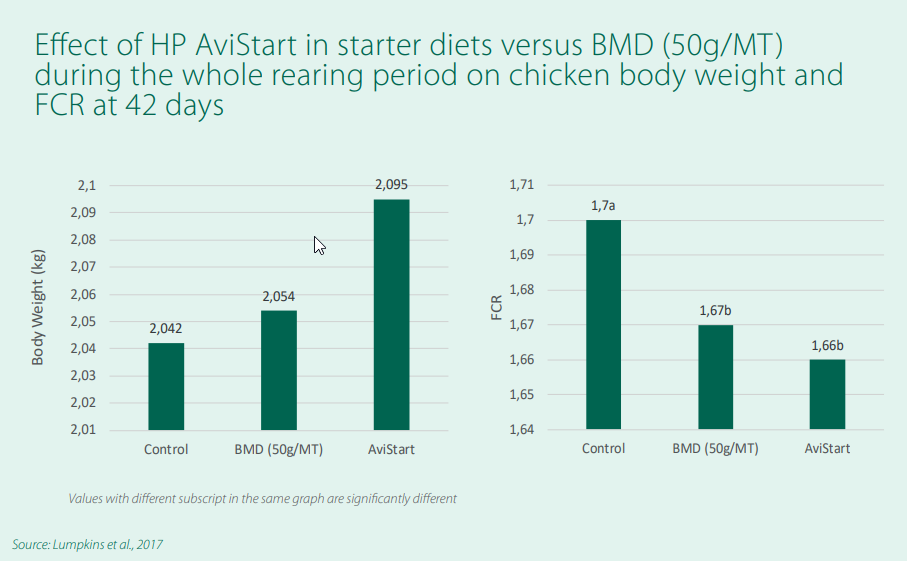

Poultry events
We attend events around the world. Meet us at exhibitions and seminars - we always look forward to welcoming you!
We also sponsor conferences with focus on young animal nutrition.
Have a look below where to meet us next.
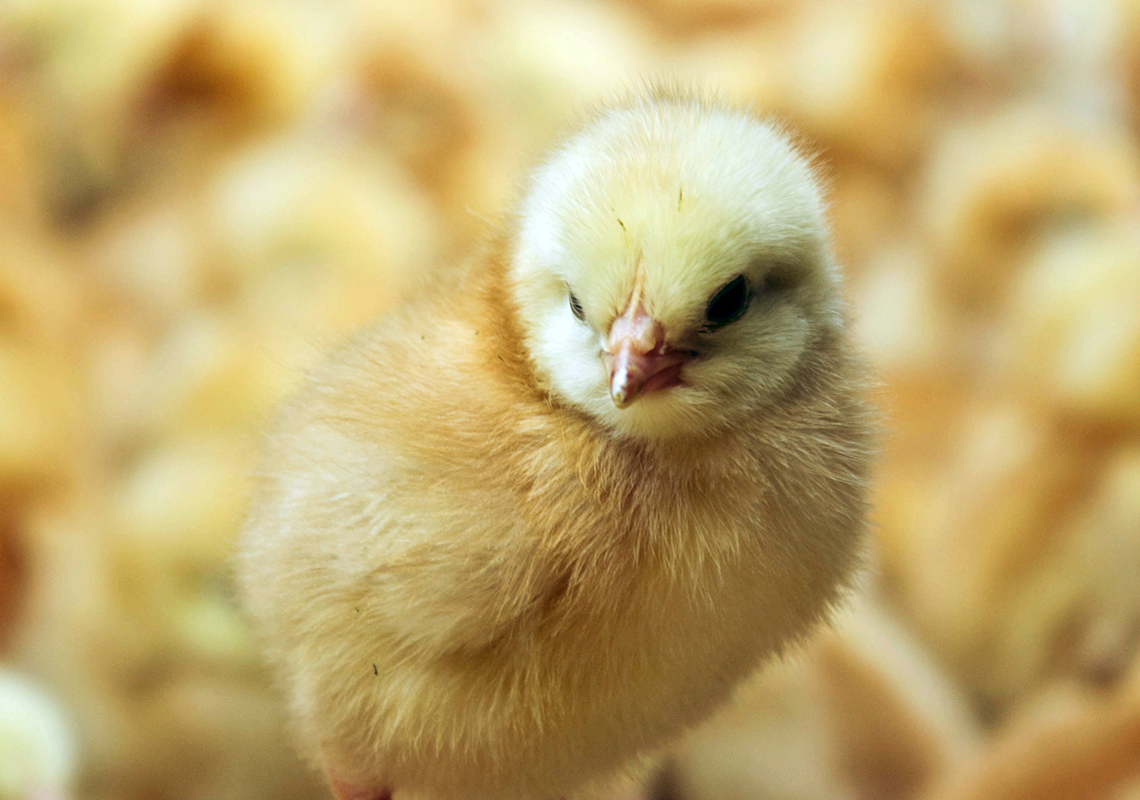
Benefitting from our products
Feed is the critical factor in animal production, accounting for up to 70% of total costs. Using HAMLET PROTEIN specialty soy proteins in young animal feed, you can optimize feed efficiency – and maximize your return on investment.
The key is their easy absorption by immature guts. Although added to feed for only a limited period in early life, our proteins have a strong carry-over effect on animal growth and performance. Feeding trials have documented a higher slaughter weight compared to animals fed standard soybean meal.
Our highly bioavailable proteins improve feed quality overall. That paves the way to reducing the total protein content – cutting the cost of your formulation.
